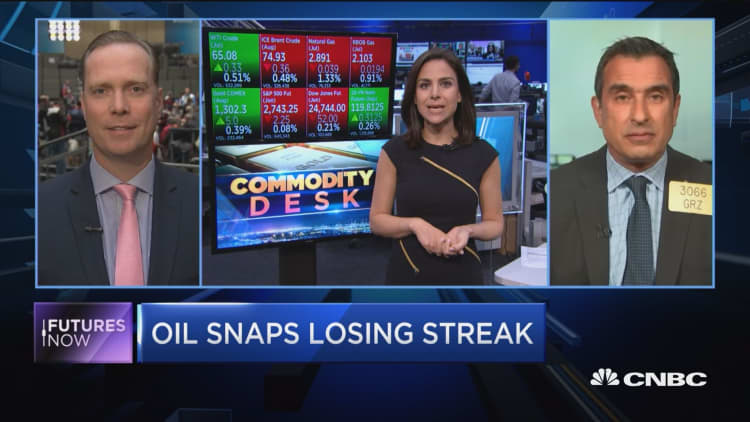Oil prices fell on Wednesday on signs that Saudi Arabia and other big producers may increase production and following a surprise build in U.S. crude stockpiles.
U.S. crude inventories rose 2.1 million barrels in the week to June 1, the Energy Information Administration said, a surprise after analysts had forecast a decrease of 1.8 million barrels. Fuel inventories also rose.
EIA also said U.S. crude output hit a record of 10.8 million barrels a day in the week. Rising production has prompted selling since global benchmark Brent climbed above $80 a barrel last month.
"The continuing increase in crude oil production is weighing on the market, and quite significantly compared to this time last year," Andrew Lipow, president of Houston-based Lipow Oil Associates. U.S. oil production is up 1.5 million bpd from a year earlier.

U.S. light crude ended Wednesday's trading session down 79 cents, or 1.2 percent, to $64.73, its lowest closing price in nearly two months.
futures were down 5 cents at $75.33 a barrel by 2:29 p.m. ET, while U.S. gasoline futures sank about 1.9 percent to $2.0662.
Crude futures had slipped slipped earlier on Wednesday as worries about oversupply ahead of a potential output increase from OPEC offset signs that Venezuela will halt some crude exports.
India's oil minister said on Wednesday his Saudi counterpart had told him the kingdom was revisiting its policy of cutting production, which has been a major factor in supporting prices in recent months.
The U.S. government has unofficially asked Saudi Arabia and some other OPEC producers to increase output, sources told Reuters on Tuesday.
OPEC and Russia will meet on June 22/23 to decide whether to increase production following a fall in global inventories as world demand outstrips supply.
The producers have been considering a supply increase of up to 1 million barrels per day, sources told Reuters.
"The oil price is being driven by OPEC and views on how much and how quickly 'OPEC plus' will raise output," Energy Aspects analyst Virendra Chauhan said.

Balancing expectations of higher OPEC output has been falling Venezuelan oil production.
Venezuela has the world's biggest oil reserves and is a key supplier to American fuel markets but its output has been hampered by inadequate investment, mismanagement and a confrontation with the United States that has led to sanctions.
Three sources have told Reuters that Venezuelan state firm PDVSA is considering declaring force majeure on some exports, amid plummeting output and tanker bottlenecks at ports. Companies declare force majeure when forces beyond their control prevent them from fulfilling contracts.
U.S. sanctions on Iran are also threatening to reduce oil exports from the OPEC producer.
"It's a tug of war between the loss of supply from Venezuela and Iran and the potential output increase from OPEC and U.S. shale," said Tony Nunan, risk manager at Mitsubishi Corp. "$80 is a temporary ceiling for oil until we hear from OPEC."
— CNBC's Tom DiChristopher contributed to this report.

